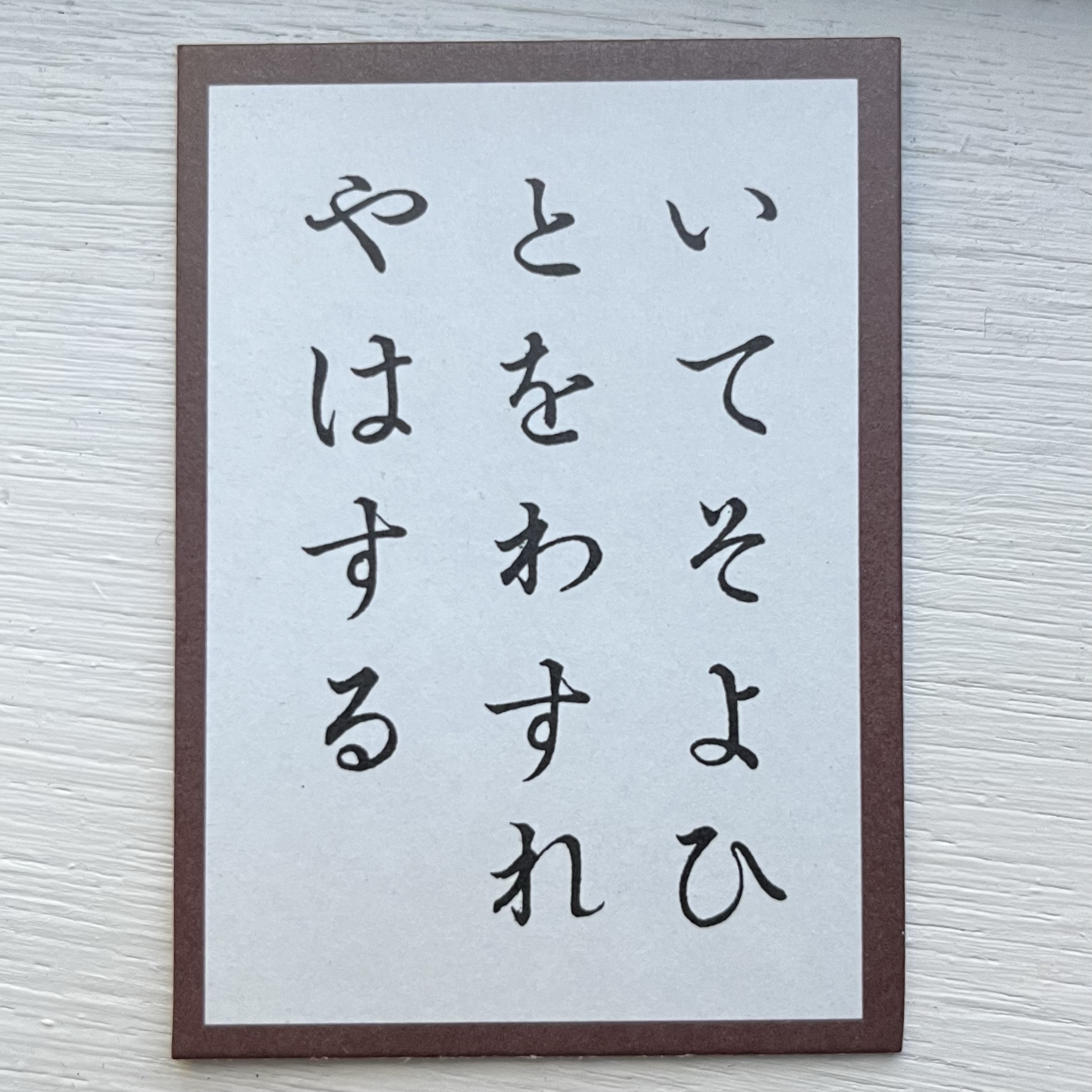In the Heian Period of Japanese History, poetry was the height of sophistication and culture, and so those who had a particular talent for poetry could expect social immortality. Not surprisingly, later commentators had lists of poets whom they dubbed as geniuses or even “immortals of poetry”. The most iconic list is the Six Immortals of Poetry or rokkasen (六歌仙).
The term was coined in the first imperial anthology, the Kokin Wakashū (古今和歌集), by Ki no Tsurayuki (紀貫之, 872 – 945). Tsurayuki also happens to have composed poem 35 in the Hyakunin Isshu.
In the Kokin Wakashu’s preface, Ki no Tsurayuki lists each poet as representative of the current era of poetry, and critiques their skills and faults. Comments by Ki no Tsurayuki here are translated by Laurel Rasplica Rodd and Mary Catherine Henkenius in Kokinshu: A Collection of Poems Ancient and Modern.
The Six Immortals, in the order described in the Kokin Wakashū, are:
Sōjō Henjō
Sōjō Henjō (僧正遍昭 816 – 890), or “Archbishop Sōjō”, author of poem 12 in the Hyakunin Isshu, was a Buddhist monk who took tonsure with the Tendai sect after the death of his lord, Emperor Ninmyō. He had originally served as a sort of chamberlain to the Emperor, and was also rumored of have had an affair with Ono no Komachi above. In his later life, he helped to found a Buddhist temple south of Kyoto, and later administered another one, which earned him the rank of high priest in the process.
His son also took tonsure at the same time as Henjō, and became Dharma Master Sōsei (素性法師, Sōsei Hōshi) as well as an accomplished poet. Sōsei authored poem 21 in the Hyakunin Isshu.
Ki no Tsurayuki simply states that his style is:
…good but who lacks sincerity. His poetry is like a painting of a woman which stirs one’s heart in vain.
Page 43, Kokinshu: A Collection of Poems Ancient and Modern
Ariwara no Narihira
Ariwara no Narihira (在原業平, 825 – 880) is one of the most famous poets in antiquity and author of poem 17, probably the most iconic poem in the Hyakunin Isshu itself. He came from a family of talented poets (his older brother composed poem 16).
Narihira was quite a ladies man and became the archetype for the hero in the Tales of Ise, but also got himself in trouble with the Court. Emperor Montoku did not promote Narihira’s rank in Court as punishment during his reign.
Ki no Tsurayuki grumbles that Narihira’s poetry:
…has too much feeling, too few words. His poems are like withered flowers, faded but with with a lingering fragrance.
Page 44, Kokinshu: A Collection of Poems Ancient and Modern
Fun’ya no Yasuhide
Funya no Yasuhide (文屋康秀, dates unknown) was a poet of the early Heian Period and thought to be a contemporary of Ariwara no Narihira and shared a relationship with Ono no Komachi. He is the author of the brilliantly clever poem 22 in the Hyakunin Isshu.
Ki no Tsurayuki says that Yasuhide:
…used words skillfully but the contents and expression does not suit the contents. His poetry is like a tradesman attired in elegant robes.
Page 44, Kokinshu: A Collection of Poems Ancient and Modern
Kisen Hōshi
Kisen Hōshi (喜撰法師, dates unknown), or “Dharma Master Kisen” was another Buddhist monk of the early Heian Period, though little else is known about him. He composed poem 8 in the Hyakunin Isshu, but also earned his place in other anthologies as well.
Ki no Tsurayuki critiques his poetry as:
…vague, and the logic does not run smoothly from beginning to end. Reading his poems is like looking at the autumn moon only to have it obscured by the clouds of dawn.
Page 45, Kokinshu: A Collection of Poems Ancient and Modern
Ono no Komachi
Ono no Komachi (小野小町, c. 825 – c. 900) was said to be the most beautiful woman of her era, and men fell at her feet. In one story, she promised to love a man if he visited her 100 nights in a row, but he failed toward the end to see her one night, and she rejected him. He later died in grief, and Ono no Komachi was overcome with guilt and sorrow as well. Two of the other Immortals listed here were both said to have had relationships with her.
However, it was not to last. In her later years, she lamented her old age (poem 9 in the Hyakunin Isshu). Her fickle nature with men, plus her decline are subjects of Japanese art, though as I write in the link above, I think this reputation was perhaps unfairly applied.
In any case, Ki no Tsurayuki describes her as:1
…full of sentiment but weak. Her poetry is like a noble lady who is suffering from a sickness, but the weakness is natural to a woman’s poetry.
Page 45, Kokinshu: A Collection of Poems Ancient and Modern
1 boo to misogyny! 😒
Ōtomo no Kuronushi
Ōtomo no Kuronushi (大友黒主, dates unknown) is another poet of the Heian Period and is featured in the Kokin Wakashū anthology a number of times, but does not appear in the Hyakunin Isshu at all.
Of Kuronushi, Ki no Tsurayuki writes that his poems are:
…rustic in form; they are like a mountaineer with a bundle of firewood on his back, resting in the shade of the blossoms.
Page 46, Kokinshu: A Collection of Poems Ancient and Modern

Leave a comment